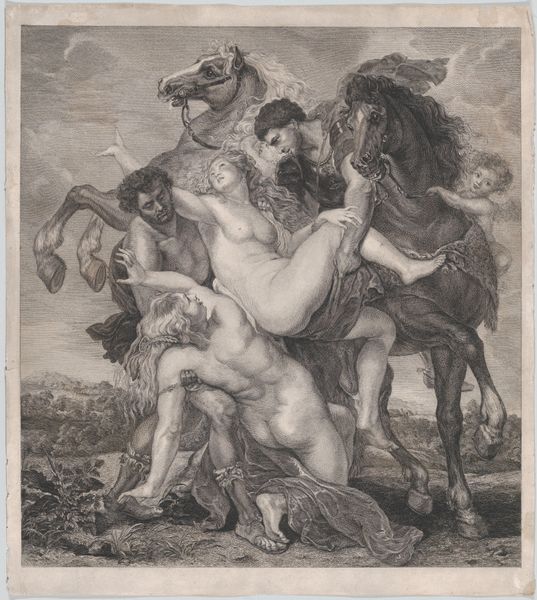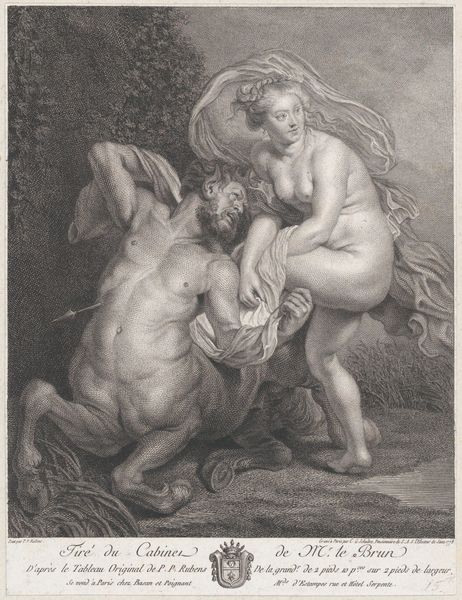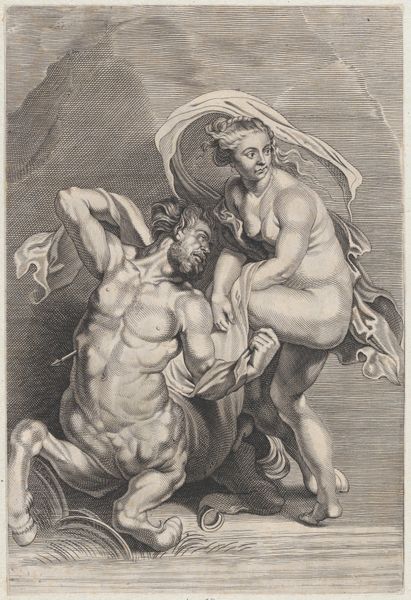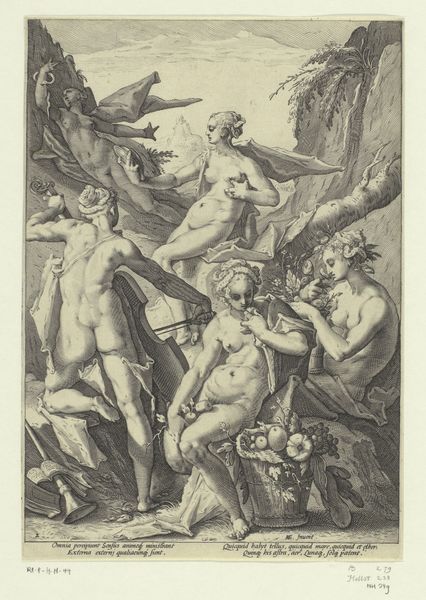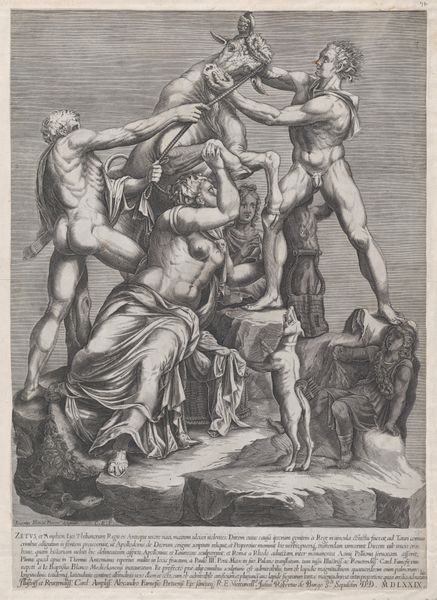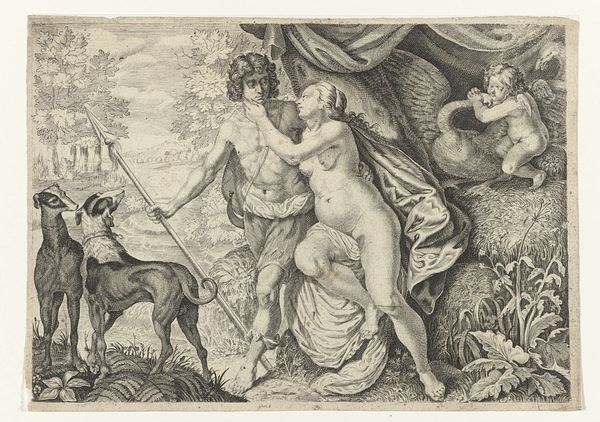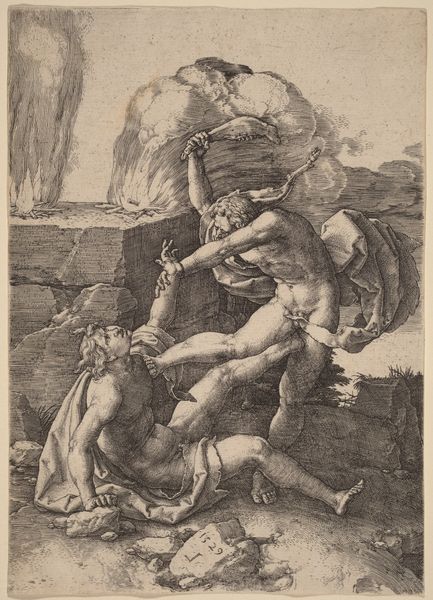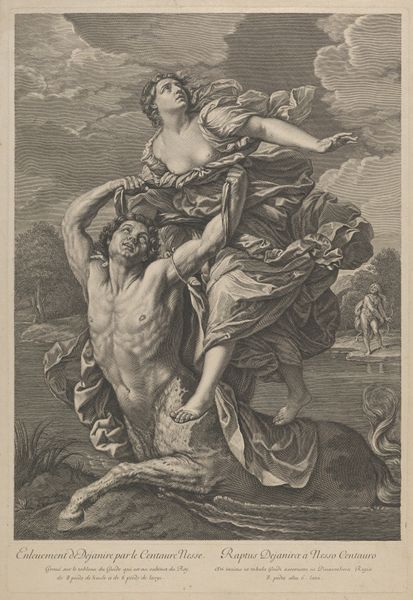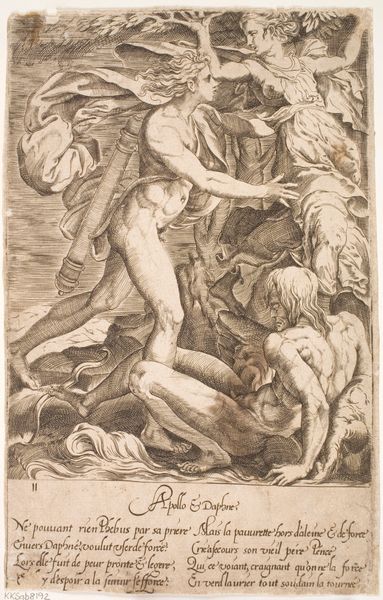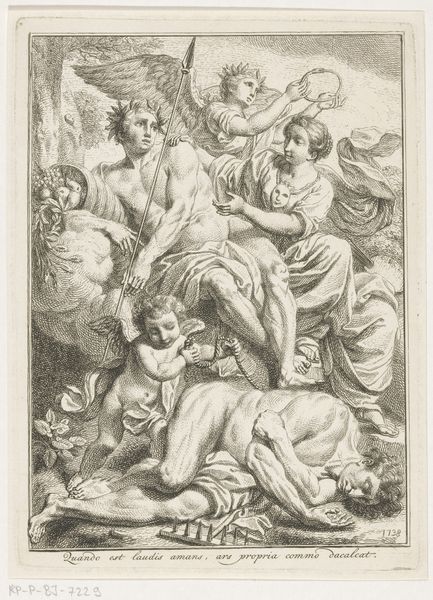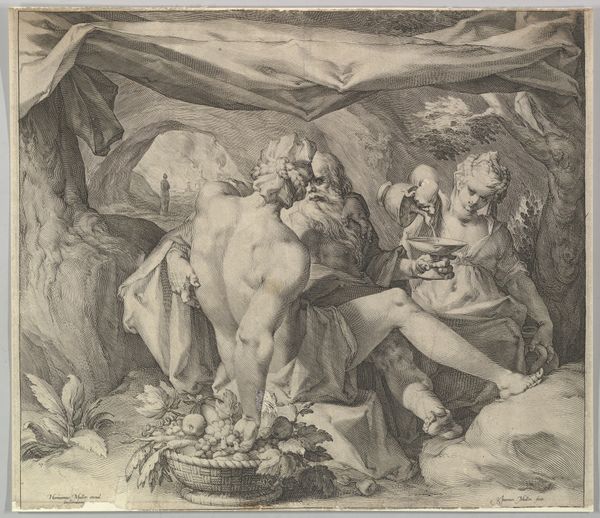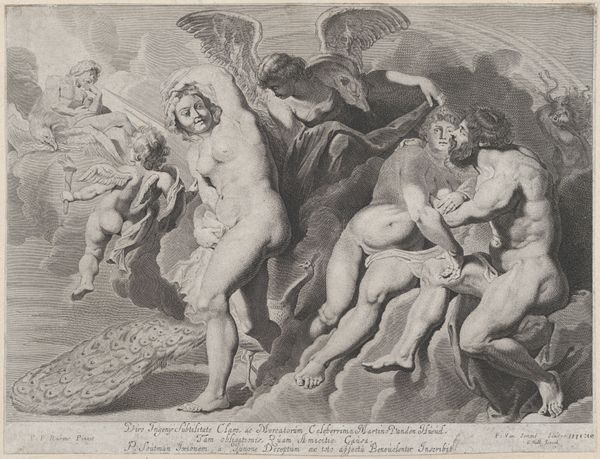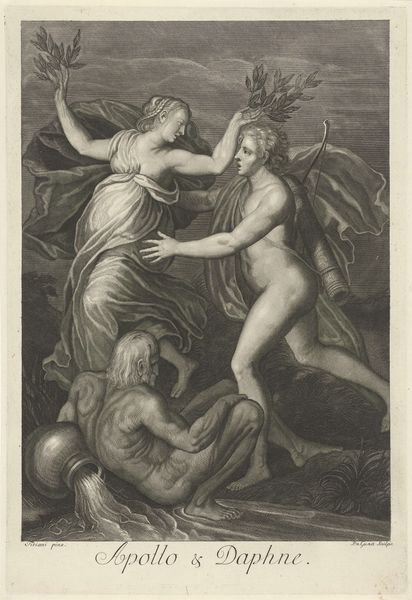
Phoebe and Hilaeria, the daughters of Leucippus, being abducted by Castor and Pollux 1745 - 1805
0:00
0:00
Dimensions: Sheet (Trimmed): 15 7/8 × 14 3/8 in. (40.3 × 36.5 cm)
Copyright: Public Domain
Editor: This engraving from sometime between 1745 and 1805 depicts "Phoebe and Hilaeria, the daughters of Leucippus, being abducted by Castor and Pollux." The scene is… chaotic! It's a swirl of bodies, horses, and implied movement. How would you interpret the way this work participates in the visual culture of its time? Curator: Well, looking at it from a historical perspective, the act of "abduction" that this image centers on was a complicated visual and cultural trope. These scenes often depicted what we might recognize today as sexual assault, but were framed and celebrated as displays of male prowess or acts of romantic acquisition through force, linking social power to violence, specifically towards women. What message do you think audiences at the time were expected to receive from depictions of such scenes? Editor: I suppose it reinforced existing power structures, with men taking what they wanted, even women. The classical setting might have lent it an air of historical justification too, like “this is how things have always been.” Curator: Exactly. And consider who was commissioning and consuming art like this. Were they critiquing these values, or perpetuating them? The very display of this print within the public museum context, the Met, implicates this artwork in today’s social values as well, making it crucial to acknowledge these complexities and histories surrounding violence and gender in our own time. The gaze, too, and who is expected to consume that spectacle is critical, don't you agree? Editor: Absolutely, and thinking about it as a student of art history I recognize how powerful an act of art it would have been and remains as an artifact that speaks not only of this violent historical moment, but one to contend with and dismantle now. Curator: Precisely, thinking about the legacy, reception, and function within our current framework opens further investigation and contemporary readings into this piece.
Comments
No comments
Be the first to comment and join the conversation on the ultimate creative platform.
